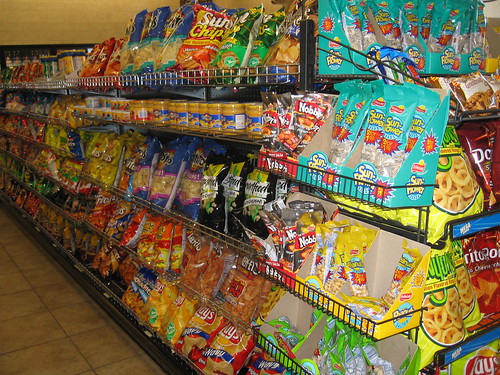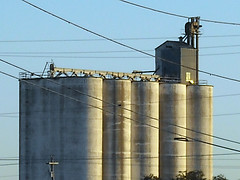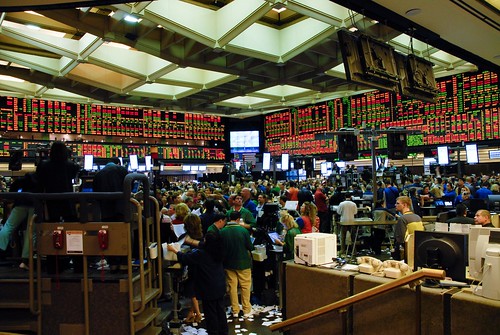This article should, by rights, be an entire book: the consequences of agricultural commoditization are profound and far-reaching. By necessity, I am concentrating on a few key points.
Where’s The Real Food?
One of the largest movements in 20th century agriculture was the commoditization of food.
In 1900, 41% of the US workforce was directly employed in agriculture, and each farm produced over five different crops for sale—not counting food consumed on the farm or sold locally, outside the commodity system. Furthermore, 60% of Americans lived in rural areas. (Source: USDA.) This means that the majority of Americans either grew their own food, or had direct access to the producers of the food they ate.
In 2000, just 1.9% of Americans were employed in agriculture, farms produced an average of just over one crop for sale, and less than 1 out of 4 Americans lived in rural areas. The number of farms has fallen 63%, while the average farm size has risen 67%.
All charts above from the USDA Economic Research Service:
The 20th Century Transformation of U.S. Agriculture and Farm Policy
by Carolyn Dimitri, Anne Effland, and Neilson Conklin
Economic Information Bulletin No. (EIB-3) 17 pp, June 2005
In other words, we no longer have direct access to the food we eat. How did this happen?
As usual, the answer is simple: follow the money.
A Silly and Far-Fetched Scenario
Let’s consider a silly and far-fetched scenario for a moment.
The US government decides that Hollywood’s dominance of the world entertainment industry should be encouraged at the creative end as well as the financial end, and offers the following incentive:
“We will pay $100 for every new song of two minutes or longer, recorded in English by an American citizen in America, upon registration with the Copyright Office.”
(Subject to a raft of rules and red tape, of course.)
Right away we can see the problem: there is no incentive to write a song that anyone else wants to hear! The only incentive is to write lots and lots of ‘songs’…and it would probably take about six hours for enterprising programmers to write song-generation programs that put together random chord progressions and random sentences off the Internet, automatically play them with a synthesizer, and send them into the Copyright Office as quickly as they could record the vocals.
In other words, such an incentive would not result in more entertainment: it would result in a tsunami of unlistenable crap.
Commoditization: What Does “Fungible” Mean?
The definition of a commodity is “a good supplied without qualitative differentiation across a market.” This property is called “fungibility”.
Sadly, the term “fungible” has nothing to do with either fungi or dirigibles. A fungible good is capable of mutual substitution: one unit is defined to be just as good as any other.
We can see that fungibility is a necessary property of money. If I loan you 100 dollars, I don’t expect to get the same $100 back I loaned to you…any $100 will do, because dollars are fungible.
Similarly, we can see that fungibility is a necessary property of commodities. If I contract to deliver you 1000 pounds of copper in March of next year, you shouldn’t have to care where the copper comes from.
Fungibility also applies to agricultural commodities: if I contract to deliver 100 bushels of corn in September of next year for a set price, it’s clearly impossible for you to inspect or evaluate corn that I haven’t even grown yet! So certain minimum standards for delivery are defined—and beyond that, all corn is the same.
Like most commodities, grains are mixed without regard to source: the producers sell their corn, whereupon it’s transferred via an elevator to a silo and mingled with all the other corn from the area, and anyone who buys corn simply gets whatever comes out of the elevator first.
We can see that an attempt to make non-fungible creations (songs) into a fungible commodity, as in the silly example above, would result in both an oversupply of unlistenable songs and an economic catastrophe.
Problem #1: Real Food Is Not Fungible
The alert reader will see several problems with this “fungible food” scenario right away. The first problem is that real food is not fungible.
For instance, when we go to buy onions, tomatoes, melons, or other produce, we don’t just choose them at random. We choose the variety that will taste best in our recipe, and from that, we choose the ripest, least damaged, best-looking, best-smelling ones available. We may even reject all the choices as unsuitable and visit a different store…or the farmer’s market.
Unfortunately, when a food becomes commoditized, we no longer have that choice. There’s no such thing as artisanal corn syrup, soybean oil, or textured vegetable protein: they’re made from commodity crops, and you’ll get whatever came out of the grain elevator.Problem #2: Fungibility Begets Mediocrity
The second problem, which is a consequence of the first, is that fungibility begets mediocrity.
Consider: if you are a farmer, and the only standard for corn is that there be as many bushels of it as you contracted to deliver, are you going to care about nutrition? About taste? About pesticide contamination?
No. You’re not going to care about anything but producing the maximum quantity possible for the least cost, because it doesn’t matter. You can produce the most nutritious corn in the world…but you won’t be paid any more for it than your neighbor who’s just trying to cut costs.
Furthermore, we can see that agricultural price supports make this problem far worse. Think back to the songwriting example above: if you’re absolutely guaranteed to get paid by Uncle Sam as long as your ‘song’ is two minutes or greater, why bother creating anything meaningful? You’ll make far more money by creating unlistenable crap as quickly as you can.
Similarly, if you’re growing a crop (such as corn, wheat, cotton, or soybeans) that receives price supports, you’re not going to care about taste, nutrition, or any other measure of quality—let alone topsoil depletion or groundwater contamination. You’re paid by the bushel, and all that matters is how many bushels you can grow.
Is it any wonder that these “commodity crops” are so devoid of nutrients that products made from them must, by law, be “fortified” with vitamins and minerals in order to avoid massive outbreaks of deficiency disease?
Follow the money. We get what we reward.
Problem #3: Fungibility Impoverishes Farmers And Enriches Middlemen
The next problem I’ll discuss here is a consequence of the first two. It’s less obvious, but more far-reaching: turning a crop into a fungible commodity impoverishes farmers and consumers, while enriching middlemen.

Wagyū beef. To get this much fat inside your own muscles, make sure to feed yourself a similar diet of whole grains!
However, if you’re forced into the commodity system, where you receive the same price for your crop regardless of quality, that means you can no longer differentiate your crop from anyone else…
…which means that you’re competing directly with everyone else, and your profit margins drop to nearly zero.
Processors and other middlemen benefit dramatically from this arrangement: they use these cheap commodity crops as raw materials to produce a bewildering variety of packaged pseudo-foods, which they differentiate and sell at the markup that used to belong to producers of actual food.

Most products in the snack and breakfast aisles are made from disassembling artificially cheap corn into its constituent parts, adding some artificial flavoring and coloring, and reassembling them into something that costs more per pound than pork, chicken, or hamburger. Cheetos, Fritos, Doritos, Tostitos, Corn Flakes, Corn Pops...
Furthermore, this allows the financial industry to profit by “making the market” (inserting themselves as middlemen in all transactions, e.g. “futures”), taking another slice of income out of the farmer’s remaining profit margin, and increasing prices to us at the supermarket.
Here’s an illustrative example: since eggs are not completely fungible, an egg farmer—even a giant industrial egg farmer—makes over fifty cents per dollar of eggs sold. A corn farmer makes about four cents per dollar of corn syrup.
Problem #4: Fungibility Causes Environmental Devastation
The final problem I’ll discuss here is the environmental devastation wrought by commodity agriculture.
When commoditization prevents anyone from earning a margin on their crops by differentiating theirs from everyone else’s, and the market is further distorted by artificial incentives to produce as much as possible without regard to quality, we can expect that an unsustainable exploitation of resources will quickly result.
This is, in fact, the case. As I previously wrote in this article:
…Industrial grain production impoverishes our farmers, destroys our soil and our water, and leaves barren land, salt flats, and dead ocean deltas in its wake. It demands unimaginable amounts of fossil fuels to create nitrogen fertilizer, toxic herbicides and pesticides, and giant sowing and harvesting machines, and to transport the grain from the Midwest to where people actually live. It demands giant, river-killing dams to fill irrigation canals. It strip-mines fossil water, pumped from underground aquifiers that took millions of years to fill—all to grow corn, wheat, and soybeans on land best suited for grazing livestock on perennial grasses. And 3-5% of world natural gas production—1-2% of the entire world energy supply—is required just to make ammonium nitrate fertilizer.
In short, industrial agriculture is an unmitigated environmental catastrophe.
(Follow the links for more information about each issue.)
Conclusion: Eat Food, Not Commodities
Unfortunately my silly and far-fetched example above isn’t far-fetched at all: it’s become the foundation of our nation’s food policy.
The problems of industrial agriculture are primarily caused by a combination of commoditization and the broken farm policy that subsidizes it, leading to massive overproduction of corn, wheat, and soybeans that generates profits for middlemen and the financial industry at the direct expense of farmers and the consumer…
We overproduce so much corn that our government has to force us to add it to gasoline in order to get rid of it all—at a net energy loss, and at considerable environmental damage!
…and our farm policy has steadily become crazier and more destructive throughout both Democratic and Republican administrations.
While our tax dollars will most likely continue to subsidize the cheap grain-based packaged foods that are making us fat and diabetic, we can always take action at an individual level by buying and eating real, nutritious, delicious food…
…not “commodities”.
Live in freedom, live in beauty, eat like a predator.
JS
Further Reading
This article only begins the discussion of agricultural commoditization. Richard Manning’s “Against The Grain: How Agriculture Has Hijacked Civilization” not only covers these issues in depth—it goes much farther into the consequences of agriculture in general, not just the modern industrialized version. I highly recommend it.




